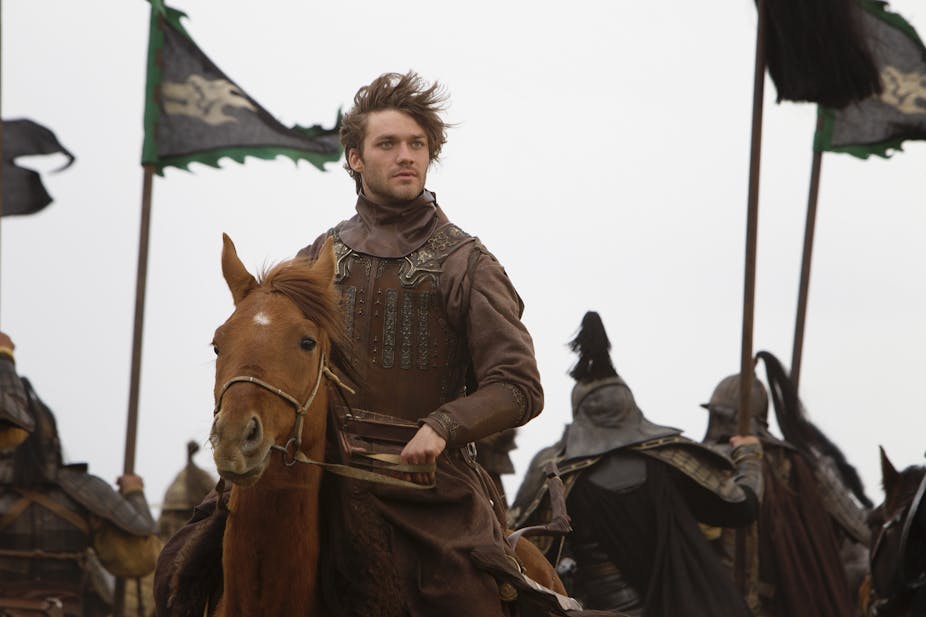It is a name that most will have heard of, but few, perhaps, actually know much about. But Marco Polo, an epic ten-episode programme hosted by Netflix, may change that. The show has already been dubbed the “Chinese Game of Thrones” due to its massive budget – which stands at a staggering US$90m (£58m). This makes it the second most expensive TV series ever, after (you guessed it) Game of Thrones.
There are more questions asked about Marco Polo than there are possible answers. Even the doubts about his presence in China have yet to silenced, despite most reputable experts accepting that his family of Venetian traders had gained access to the court of the Great Khan, Qubilai, in Khanbaliq or Dadu, as the Yuan capital – today’s Beijing – was known.
So before the misconceptions and stories start flowing, let’s set the record straight.
The real Marco
Marco Polo was born on September 15 1254 in Venice or as some maintain, on the Dalmatian island of Korčula, into a family of Venetian traders. A common misconception is that he was the first European to reach China. In fact, his father Niccolo and uncle Maffe had just arrived back from a long trip to the court of the Great Mongol Khan Qubilai when they decided to return with their young protégé. What makes Marco Polo so special is that he was the first European to record his travels in detail and so inspire others to venture into those previously unknown climes including cartographers and such giant figures as Christopher Columbus.
The Polos returned to Yuan China with Marco in 1271, when he was 16. They did so to fulfil a promise made to Qubilai Khan to present him with “oil from the lamp in Jerusalem” and letters from the Pope. They did not, however, bring him the “100 Christians acquainted with the Seven Arts (grammar, rhetoric, logic, geometry, arithmetic, music and astronomy)” that the Great khan had requested from the Vicar of Rome.
Their journey took them from Acre on the coast of Palestine across the Jordanian desert, Ilkhanid Iran and into the Hindu Kush where they threaded a dangerous path into the high Pamirs. They travelled from the friendly Ilkhanate, who were allies of Qubilai, then between the Chaghadaid Khans to the north and the sultans of Delhi to the south, both of whom were then hostile to the Great Khan in Khanbliq (Beijing). When the Venetian travellers arrived is not recorded, but they were safely in the Khan’s court by 1275. Marco would have been 21.

Court of the Khan
Marco knew at least four languages and though young had accumulated a great deal of experience. He worked for the Khan as a government official (though he probably exaggerated the importance of the positions he occupied). He travelled and collected data and knowledge about many of the towns, cities and provinces of Qubilai’s southern and eastern regions, including Burma.
His knowledge of the country and of the history of the Mongols and their political conflicts is impressive. Some are sceptical of his account because of apparent gaps in his knowledge but it should be remembered that he was working for the Mongol ruling elite, who would have restricted his access to the ordinary Chinese. Other sceptics have wondered why he failed to refer to the Great Wall. But the Great Wall as we understand it today was constructed under the Ming Dynasty, which came later, so it would be downright remarkable if he had.
The Great Khan had so warmed to the Polo party that he was very reluctant to let them leave his service. But the Polos feared that should Qubilai die, their closeness to the ruler might work against them with his successors. And so when in 1292 a request arrived from the Ilkhan Arghun of Iran asking for a Chinese wife, the Polos persuaded Qubilai that they should accompany the princess on the perilous sea voyage westward. Almost 20 years after their arrival, a party of 14 ships left the port of Quanzhou for the long and perilous journey via the Malacca Straits across the Indian Ocean to the port of Hormuz in the Persian Gulf. Of the 600 passengers who had set out, only 18 including the Polos and the princess, survived to disembark on Iranian soil. The Polos would then wind their way home via Constantinople.

Return home
Marco Polo returned to Venice in 1295 with a fortune converted into gemstones. But it was not long after this that he became embroiled in Italy’s endemic military conflicts. It was while he was held hostage during these skirmishes between Italy’s city states that his memoirs were written – but not by himself. He was not a writer nor a storyteller and so his writings were in fact penned by a chance acquaintance and professional wordsmith, the romance writer, Rustichello da Pisa, who was imprisoned with him.
In 1299 he was finally released from captivity and the account of his travels was released. It became an immediate success and was copied and translated into multiple editions. Rustichello was probably hoping to compile a guide for merchants and travellers but since no definitive text of the finished product exists the travelogue which is read today is an amalgamation of various texts and translations produced in the 14th century.
Marco married and fathered three daughters. He retired a rich and famous man. He never returned to China and Qubilai Khan died not long after the Polos’ departure. Today he is celebrated the world over and has lent his name to hotels, businesses, transport companies and franchises. He has inspired, entertained and encouraged generation upon generation of travellers, tourists and explorers. With or without Netflix’s help, he will no doubt continue to do so for many years to come.
This article was amended on December 15 to highlight the contention surrounding Marco Polo’s birthplace.

